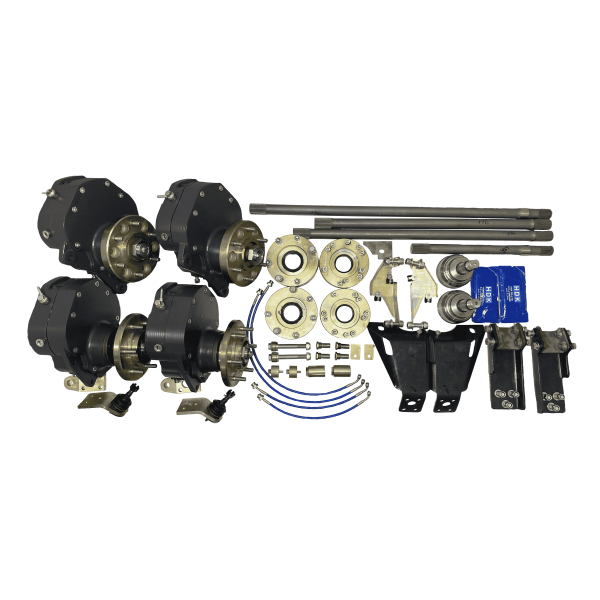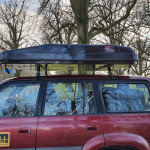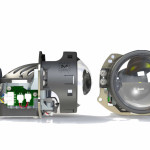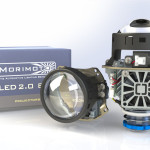Portal Axles Explained – 4x4 Diff Lift & Off-Road Upgrade

On this page
What are portal axles?
Portal axles relocate the wheel centreline lower than the axle centreline by using a compact reduction gearbox at each hub. That means your differential housing sits higher off the ground, gaining real clearance where standard 4x4s usually hang up.
Benefits vs tall suspension lifts
- True diff clearance without jacking the body sky-high.
- Calmer driveline angles vs extreme lifts (friendlier CV/U-joint geometry).
- Built-in hub reduction for smooth crawl control and hill starts.
- Room for larger tyres with better approach/break-over/departure angles.
- Less underbody contact in ruts, washouts and rock steps.
How they work (hub reduction & geometry)
Each portal hub contains a gearset that both drops the wheel centre and reduces the final drive at the wheel. Common road-going kits use ~1:1.35 hub ratios (about 35% reduction), which improves low-speed control and reduces stress through the driveline. Because the axle tubes and differential sit higher, you gain clearance without over-tilting suspension links or propshafts.
Typical specs snapshot
Specs vary by vehicle and brake package, but many mainstream bolt-on kits advertise:
- Clearance increase: about +130 mm at the diff housing (e.g., LC80/Y61 kits). :contentReference[oaicite:0]{index=0}
- Hub reduction: typically 1 : 1.35. :contentReference[oaicite:1]{index=1}
- Minimum rim size: often 16″ (some IFS/large brake kits require 17″). :contentReference[oaicite:2]{index=2}
- Wheel pattern/offset examples: 6×139.7, recommended offset around ET 60 on many Toyota/Nissan kits. :contentReference[oaicite:3]{index=3}
- CTIS compatibility: many kits support central tyre inflation options. :contentReference[oaicite:4]{index=4}
Figures shown are representative examples from popular solid-axle platforms; your final spec is confirmed at quoting and may differ by vehicle.
Vehicle applications & kits
Modern bolt-on portal axle kits exist for a wide range of 4x4s. Examples available from Werewolf include:
- Toyota: Land Cruiser 80/100, FJ Cruiser, Lexus GX/LX470. :contentReference[oaicite:5]{index=5}
- Nissan: Patrol Y61/Y62. :contentReference[oaicite:6]{index=6}
- Land Rover: Defender 90/110/130. :contentReference[oaicite:7]{index=7}
- Ford/Jeep/Mercedes: F-150, Wrangler JK/JL, G-Class W463, and more. :contentReference[oaicite:8]{index=8}
Browse our range: Portal Axle Upgrades · LC80 Guide · Patrol Y61 Guide
Brands: Werewolf & TRE4x4 (custom)
- Werewolf – extensive bolt-on catalogue with specs like +130 mm clearance and 1:1.35 hub reduction on LC80/Y61; CTIS options documented on selected models. :contentReference[oaicite:9]{index=9}
- TRE4x4 – bolt-on portal kits and custom portal axle solutions available to order via OFM4x4 UK. See our TRE4x4 brand page and product listings. :contentReference[oaicite:10]{index=10}
Talk to us if you need a platform that isn’t listed publicly — we can coordinate bespoke development with TRE4x4 through OFM4x4 UK.
Setup: tyres, lift, brakes & steering
- Tyres: many portal builds run 35–37″; selected projects target 38″ with guards and bump-stop work (documented on LC80/Y61 examples). :contentReference[oaicite:11]{index=11}
- Lift: aim for 50–75 mm suspension lift; portals provide diff height while keeping COG sensible.
- Brakes: matched calipers/discs or adaptors maintain bias; larger wheels may be required with big brake packages. :contentReference[oaicite:12]{index=12}
- Steering & geometry: panhard/drag-link correction brackets prevent bump-steer; ABS/TC compatibility depends on model year.
FAQs
Do portal axles replace a suspension lift?
No — portals raise the axle centreline. Most builds pair portals with a moderate lift for comfort and stability.
How much clearance do portals add?
Representative solid-axle kits advertise roughly +130 mm at the differential (e.g., LC80/Y61). Exact numbers depend on model and tyres. :contentReference[oaicite:13]{index=13}
Will the reduction ruin motorway RPM?
No — final gearing is balanced with tyre size and diff ratios. A ~1:1.35 hub reduction is common on road-going kits. :contentReference[oaicite:14]{index=14}
Do kits support CTIS?
Several kits note compatibility with Central Tyre Inflation Systems (CTIS). :contentReference[oaicite:15]{index=15}
Which vehicles have kits?
Examples include Land Cruiser 80/100, Patrol Y61/Y62, Defender 90/110/130, Wrangler JK/JL, F-150, G-Class, FJ Cruiser and more. :contentReference[oaicite:16]{index=16}


















-1000x1000w-150x150.jpg)
-1000x1000w-150x150.jpg)

